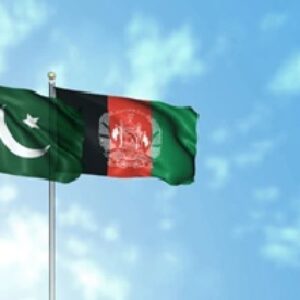~ By Raghav Pandey
Prime Minister Narendra Modi’s recent visit to Bangladesh has added several new dimensions to the already flourishing bilateral relations between India and Bangladesh. History is witness to the fact that both the countries have generally shared a good relationship ever since Bangladesh came into being, although there have been periods of turbulence. The recent visit of PM Modi saw 22 agreements being signed between the two countries; this renewed upsurge is considered the watershed moment in the history of bilateral relations between the two countries.
The most significant factor which makes this visit stand out is the ratification of the long pending land boundary agreement. This has been a significant achievement considering the fact that this issue has been long outstanding and was actually inherited by Bangladesh at birth.
In addition to the above there were 20 other agreements signed which are of mutual benefit to both the countries. To begin with, an agreement between the Bangladesh Insurance Development and Regulatory Authority (IDRA) and Life Insurance Corporation now allows this Public Sector Undertaking of India to do business in Bangladesh as a joint venture which will be known as LIC Bangladesh Ltd. A similar proposal by the LIC was rejected two years earlier by the IDRA.
It is also pertinent to note that Bangladesh has recently featured in the list of eleven countries that are predicted to economically match the BRICS countries during the course of the 21st century by Goldman Sachs. Bangladesh even while having a lower per capita GDP income than India has performed much better on social indicators. For instance the fertility rate of Bangladesh is almost at the replacement rate which effectively means that Bangladesh is headed towards a stable population.
Hence Bangladesh presents to us a model of economy where qualitative social output is possible with lesser per capita income. This model presents to the world an opportunity of tremendous economic growth. It would be pertinent to remember that a major portion of Bangladesh’s economy is driven by foreign investment.
Armed with a ‘neighbourhood first’ policy and resolute political will, India is on the right path to effectively facilitate the business potential of its friendly neighbour. The two countries renewed the bilateral trade agreement and inter alia inked a Memorandum of Understanding on Use of Chittagong and Mongla Ports, by the virtue of which, Indian vessels can now ship cargo directly to these ports, which can then be taken to Bangladesh and even North Eastern part of India. At present the position is such that the cargo is routed through Colombo or Singapore ports and hence there is no direct accessibility which ultimately contributes to the increase in cost of trading.
A memorandum of understanding on blue economy and maritime cooperation in the Bay of Bengal and the Indian Ocean was also was signed to boost cooperation in regional waters which will focus on skill development, capacity building, pollution response, tsunami and cyclone warning and fishing etc. India has a huge knowledge base backed with tremendous resources in the field of marine bio-technology unlike Bangladesh, and Dhaka hopes to benefit from this MoU in terms of knowledge sharing.
Both the countries also renewed a protocol on inland water transit and trade which will bring about a new system in accordance with the policy of World trade Organisation (WTO). There were two agreements signed for starting trans-border international bus services on the Dhaka-Shillong-Guwahati and Kolkata-Dhaka-Agartala routes. The primary beneficiaries of these agreements will be the people of the north-eastern states of India who are literally landlocked. The buses will significantly reduce the time taken to travel and will also promote tourism in the north-eastern states. This, to a great extent, allows transit through Bangladesh without saying so.
The field of security also saw MoUs being signed. The Coast Guards of both the countries pledged to prevent human trafficking and the smuggling and circulation of fake currency. These agreements were signed primarily in the backdrop of the incidents where militants have attacked India and sought refuge in Bangladesh. It is pertinent to note that, right after Sheikh Hasina took charge in 2009, her government has cracked down on such elements and handed over four terrorists to India who were wanted in India for organising attacks in North East India.
With a series of trade and investment agreements, India promised a $2 billion credit facility for Bangladesh which is to be utilised for infrastructure, power, health and education projects. This credit line is in addition to the already existing $1 billion credit facility between the two countries. The present bilateral trade between the two countries amounts to $6.5 billion but there is a huge trade imbalance, which favours India. The aim of these agreements is to balance that very deficit, by setting up industries in Bangladesh. The other MoU in line with this objective is on exclusive Indian economic zones in Bangladesh. This is also the first time a neighbouring country has allowed India such zones exclusively for Indian firms and hence Dhaka deserves accolades for the same.
In the field of power, Prime Minister Modi has pledged India’s support to Bangladesh in its goal of achieving an installed capacity of 24,000 megawatts (MW) by 2021. Towards this, Reliance Power has signed an agreement with the state run Bangladesh Power Development Board to produce 3,000 MW of electricity at a cost of $3 billion.
Other noticeable agreements were signed between the Bangladesh Standards and Testing Institution and Bureau of Indian Standards on cooperation in standardization. The Bangladesh Submarine Cable Company Limited and Bharat Sanchar Nagar Limited also signed an agreement for leasing international bandwidth for internet at Akhaura and by the University of Dhaka.
This visit and the subsequent agreements most certainly reaffirms the commitment made by both the countries to each other in Indo-Bangladeshi Treaty of Friendship, Cooperation and Peace in 1972 immediately after the independence of Bangladesh. This visit has strengthened the linkages between the countries and this, in times, will lead to South Asian outreach towards South East Asia, through India’s North East, which could be a huge positive for the economy of this entire region.
In the past India’s relations with Bangladesh have swayed with the government in Dhaka, it is essential to make the close ties and cooperation irreversible, so that the relationship thrives irrespective of the parties in power, both in New Delhi and Dhaka. It is therefore essential that the common man should start deriving benefits from the agreements signed and people to people contact between the two countries must increase and the economies must get intertwined so as to enable the populace of the two countries to enjoy the fruits of development. This will make the close cooperation between the two countries immune to political uncertainties, which often prevail in South Asia.
Raghav Pandey is a Research Associate with India Foundation. The views expressed are his own.




